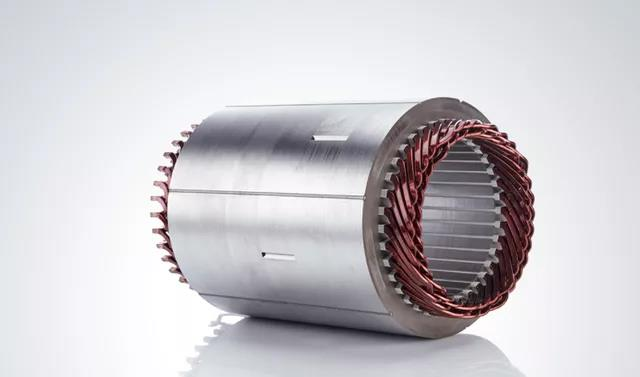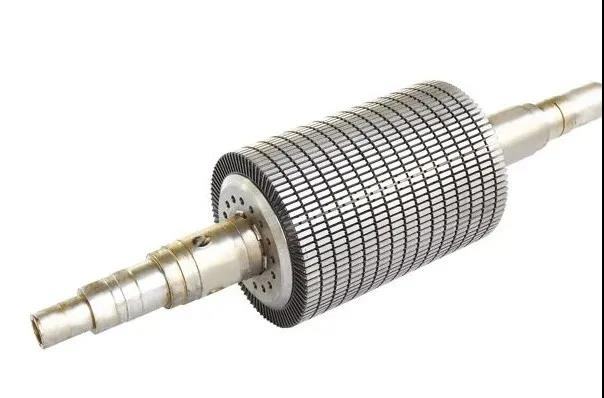The stator and rotor are the necessary parts of the motor. The stator is fixedly installed on the casing. Generally, coils are wound on the stator; the rotor is installed and fixed on the base through bearings or bushings. The rotor has silicon steel sheets, coils, and current. Under the action of the coil, a magnetic field is generated on the silicon steel sheet of the stator and rotor, and the magnetic field drives the rotor to rotate.
The stator of an asynchronous motor is composed of a stator core, a stator winding and a base.

1. The stator core
The role of the stator core is to serve as a part of the magnetic circuit of the motor and to embed the stator windings. The stator core is laminated with 0.5mm thick silicon steel sheets. The two sides of the brick steel sheets are coated with insulating paint to insulate the sheets from each other to reduce the core loss caused by the rotating magnetic field in the stator core. A number of identical slots are punched in the inner circle of the stator core for embedding the stator windings.
2. Stator winding
The stator winding is the circuit part of the motor, and its main function is to pass current and generate an induced electric potential to realize the conversion of electromechanical energy. The distribution of fixed winding coils in the stator slot is divided into two types: single layer and double layer. In order to obtain better electromagnetic performance, medium and large asynchronous motors use double-layer short-distance windings.
3. Stator base
The main function of the frame is to fix and support the stator core, so it is required to have sufficient mechanical strength and rigidity to withstand various forces during the operation or transportation of the motor. Medium and small AC motors-generally use cast iron frame, for larger capacity AC motors, generally use steel plate welded frame.

The rotor of an asynchronous motor is composed of a rotor core, a rotor winding and a rotating shaft.
Rotor core
The iron core is a part of the magnetic circuit of the motor. It forms the entire magnetic circuit of the motor together with the stator core and the air gap. The rotor core is generally made of 0.5mm thick silicon steel sheets. Most of the rotor cores of medium and small AC motors are directly mounted on the motor shaft. The rotor core of the large AC motor is mounted on the rotating bracket, and the bracket is sleeved on the rotating shaft.
The function of the rotor winding is to induce electric potential, flow current and generate electromagnetic torque. Its structure has two types: squirrel cage type and winding type.
1. Squirrel cage rotor
The squirrel-cage rotary winding is a winding that closes by itself. A guide bar is inserted in each groove, and two end rings are respectively connected to the two ends of all the guide bars at the notches extending from both ends of the iron core. If the iron core is removed, the entire winding looks like a "round cage", so it is called a squirrel-cage rotor.
2. Wound rotor
The winding type rotor winding is similar to the fixed winding, which is embedded in the rotor core slot with insulated wires and connected into a star-shaped three-phase symmetrical winding. Then connect the three small wire ends to the three collector rings rotating on the shaft, and then draw the current through the brush. The characteristic of the wound rotor is that an external resistance can be connected to the winding loop through the collector ring and the brush to improve the starting performance of the motor or to adjust the speed of the motor. In order to reduce the wear of the brushes, the winding type asynchronous motor is sometimes equipped with a brush short-circuit device, so that when the motor is started and does not need to adjust the speed, the brush is lifted and the three collector rings are short-circuited at the same time.
 BACK
BACK
In February 2025, BG Motor ushered in the traditional Lantern Festival celebrati…
The new year has begun, and BG Motor is officially back to work! After a refresh…
Dear Customers, Partners and Employees,On the occasion of the Spring Festival, B…
BG Motor, Ningbo, China, January 9, 2025 – As the festivities of Christmas and N…
At this juncture of saying goodbye to the old and welcoming the new, all BG Moto…
Originally commemorated the birth of Jesus, Christmas has become a powerful cult…